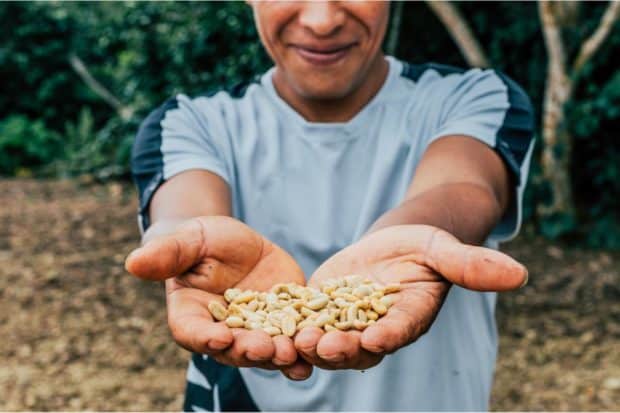Last Updated on December 17, 2023
So you’ve only ever been served coffee, and now you want to know how to buy it.
First you’ll need to decide between the convenience of pre-ground coffee and the freshness of whole-bean coffee. There’s nothing wrong with pre-ground, but we recommend whole beans if you have a grinder. You want the freshest coffee possible, and grinding just before brewing is the best way to achieve that.
That’s a fairly simple choice, but if you really want to know how to buy coffee, there are many other aspects we can get into—and we will.

We’ll start with the main question most people have, which is the difference between the various roast levels and how they affect coffee taste. Then we’ll dive into specialty coffee and some of the qualities that true connoisseurs seek out, how a coffee’s region might affect its flavor, the main types of beans, processing methods, and special certifications you might see stamped on the bag.
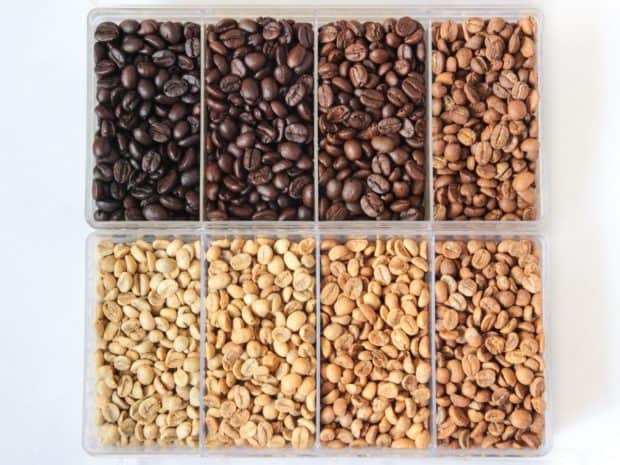
Coffee Roast Levels
Names given by coffee roasters may seem confusing, especially since the industry lacks standardization. The number of coffee varieties and roasts can be overwhelming. There are generally four different categories of roasted coffees based on how roasting affects the color and composition of the bean.
The coffee roasting process unlocks the flavor and aroma of raw, green coffee beans. The geographical origin of where the bean was grown, the roasting method used, and the amount of time roasted all impact the bean’s flavor. Light-colored beans with more complexity in their flavor are the result of shorter roasts.
The four basic types of coffee roasts are light roast, medium roast, medium-dark roast, and dark or extra dark roast.
| Light roast | Medium roast | Medium-dark roast | Dark or extra dark roast | |
|---|---|---|---|---|
| Bean color | Lighter brown shade | Brown | Darker shade of brown | Very dark brown to black |
| Common names | Cinnamon, half city, New England | American, breakfast, city, regular | Continental, full city, light espresso, light French, Viennese, Vienna | French, dark French, espresso, Italian, Turkish, heavy |
| Presence of surface oil | None | None | Some | Noticeable |
| Internal temperature (F) at peak roasting point | 360°–401° | 410°–428° | 437°–446° | 464°–482° |
| Caffeine present in each scoop | High | Medium | Lower | Lowest |
| General flavor | Noticeable acidity in the toasted bean | Acidity and aroma are balanced | Some spice present, with a heavier, full-body taste | Burnt, bitter, or smoky |
Light Roast
Roasted the least amount of time, these light brown beans offer a milder taste and lack surface oils. By volume, these roasts have the highest caffeine levels. Light roasts retain more of their original flavor profile and acidity.
Medium Roast
With less acidity and more body, medium roast coffees offer a balanced taste often preferred by many American coffee drinkers. This non-oily roasted coffee bean has a medium-brown appearance.
Medium-Dark Roast
This roast reaches the second crack in the seed, or a little beyond it, with oils appearing on the exterior. Less acidic in its profile, this is usually a more flavorful coffee with a fuller body.
Dark or Extra Dark Roast
The heat used to create the darkest roast leads to oil on the surface of the fresh beans and tends to bake away any original flavors. The length of roasting caramelizes the beans, offering a sweeter palate, the fullest body, and a richer flavor. Names for these dark to charred roasts may be used interchangeably, and often these less acidic beans have names for different areas of Europe.
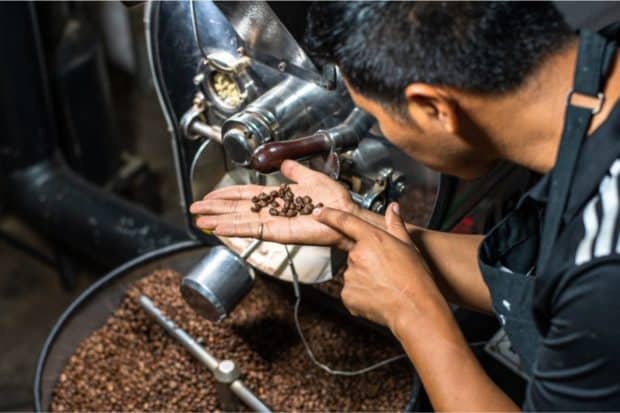
To complicate matters, some of the darkest roasts may be called Vienna (or Viennese), French, or Italian. While these labels are not used consistently, here are generally accepted descriptions of these dark roast beans:
Vienna Roast
The lightest of these three roast profiles, Viennese roasted coffee balances a smoky aroma and a flavor with a subtle dark chocolate profile. Vienna roast is an excellent option for people who want a hint of the bean’s original flavors within a darker brew.
French Roast
A richer, robust flavor and darker color result from a longer roast. Smoky with some sweetness and charred in taste, the beans that create the French roast have an oily surface.
Italian Roast
The oiliest and darkest type of roast, Italian roasts may have a slightly burnt taste. The unique flavors from the beans’ area of origin are barely noticeable at all.
Coffee Brightness
Brightness describes the amount of tang in the flavor. Bright coffees retain a noticeable chocolaty, fruity, nutty, or citrus-like palate when sipped. Coffee experts notice the complex flavors of brightness in a cup of coffee made from lighter bean roasts, since darker roasts tend to bake out the brightness.
Sometimes referred to as a brew with higher acidity, bright coffees are a matter of individual preference. Those who prefer darker roasts enjoy coffee with less brightness.
Although used interchangeably, “acidity” and “brightness” do not refer to coffees that have a lower pH level. When coffee people refer to “bright acidity,” they are talking about the complexity of taste rather than actual acidic versus alkaline properties.
Specialty Coffee vs. Commodity Coffee
Within the coffee industry, a measure known as the Q-Grade denotes the quality of roasts based on many traits, including aroma, body, and flavor. Based on 100 points, this standard helps to set the price and describe the brew’s overall quality.
A Q-Grade of 80 or above denotes a specialty coffee, versus commodity brews that have defects and less desirable traits. The majority of brew consumed is commodity coffee and most brands found in grocery stores are either commodity-grade or lower-grade specialty coffees.
Commodity Coffee
Similar to oil and some precious metals, coffee beans have a defined commodity market price. Under this arrangement, the actual quality and taste of individual beans does not affect the market price.
Most coffee consumed globally is commodity coffee. Farmers get a set price regardless of how they produced the bean or the quality of the beans cultivated. In some cases, the commodity price may even fall below the costs necessary to produce the harvest.
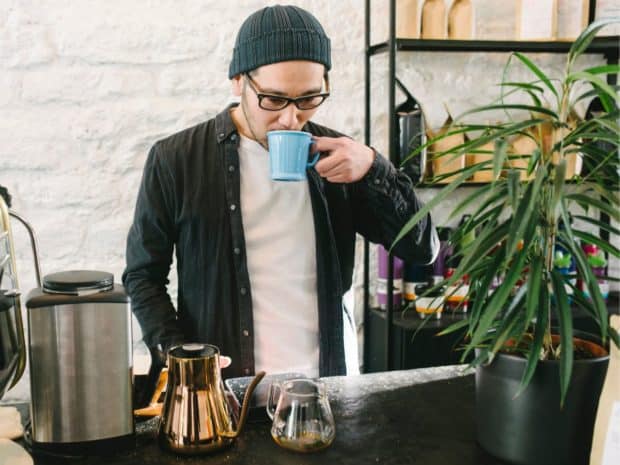
Specialty Coffee
Recognizing the time, effort, and resources necessary to cultivate the best coffee cherries, the industry developed the Q-Grade metric to define specialty coffees with scores between 80 and 100 that may come at smaller yields but command a higher price. A membership-based non-profit, the Specialty Coffee Association includes all phases of the industry with an interest in high-quality yields produced in a sustainable manner.
Careful consideration goes into the evaluation of the coffee’s quality. Since its creation in 1995, the Coffee Taster’s Flavor Wheel has served as an industry standard. The SCA most recently updated this resource in 2016 in collaboration with World Coffee Research.
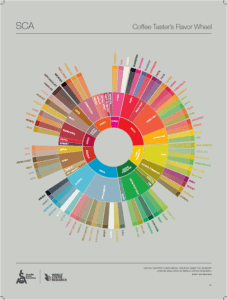
Evaluation of specialty coffees covers many areas. Quality involves more than the texture of the beans to include a concern for fair treatment of farmers, better compensation for their hard work, greater concern for the environment, and a focus on ethics and long-term crop sustainability.
If you’re unsure about the status of your brew, talk with your local coffee roaster. A high-quality roaster will seek to improve quality at all stages of the supply chain, from the growth of the bean to the taste in your cup.
Single Origin vs. Blends
Specialty coffees are often differentiated by whether the beans come from a single origin or have a blended mix of beans with different origins.
Single-Origin Coffee
Beans come from a single region or country. Due to their limited place of origin, the availability of the beans depends on the growing season. Unique and exotic in composure, single-origin coffee provides an exclusive taste with different batches having slightly different tastes.
Blended Coffee
Created from beans with different origins. The combined flavor offers a well-balanced, more consistent taste. Since beans come from different locations rather than a single point of origin, availability does not depend on conditions and harvests in a particular region.
Coffee Regions and Characteristics
Africa
Growing and harvesting seasons, mineral-rich soils, and higher elevations make Africa a great area for arabica coffee bean cultivation. Many African coffees have floral notes and fruity tastes. Ethiopia and Kenya have long-established coffee legacies. Other notable coffee producers include Rwanda, Tanzania, and Burundi.
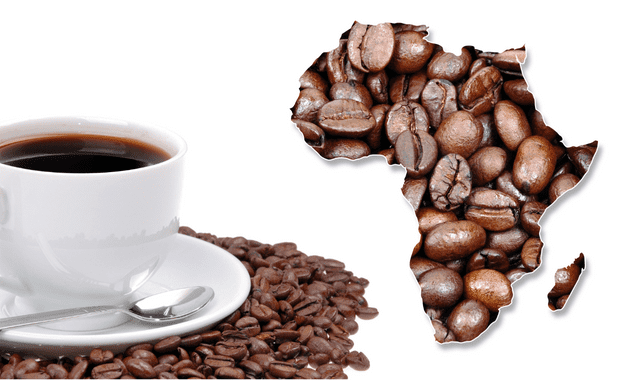
South America
Brazil is the world’s top exporter and has a wide variety of flavor profiles. Columbia is another important player in this region. Ecuador, Peru, and Venezuela also have a notable coffee production history.
Central America
Another area with arabica beans, Central America produces coffees with a great balance of mellow acidity and body, often with a fruity and sweet character. This diverse region produces a variety of coffees known as “Centrals.” Costa Rica has been a leader, but all nations from Belize to Panama produce coffee.
Asia
Coffee throughout Asia was shaped by developments during the colonial era. The Dutch on the Indonesian islands of Java, Sulawesi, and Sumatra, as well as the French in Vietnam and the English in India, have shaped distinct coffee cultures.
The Pacific
Papua New Guinea coffee production increased a century ago through cultivation on large estates and by small holders in family plots. Hawaii became the site of the ever-popular Kona harvested on its mountain slopes.
Arabica vs. Robusta
Another important consideration you may have is choosing between arabica and robusta coffee beans.
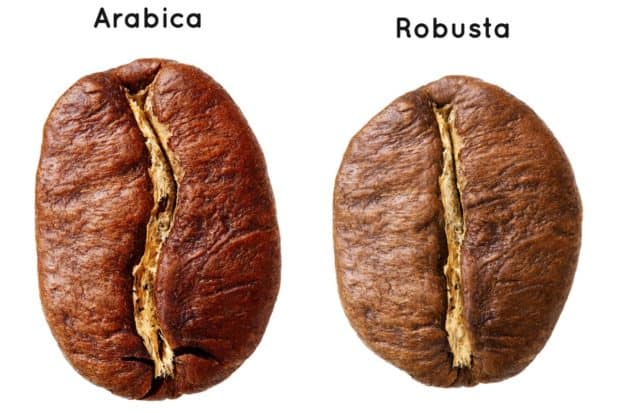
Arabica Beans
These beans require a particular cool, subtropical climate with the ideal mixture of moisture, rich soil, and sunlight to form their soft and sweet taste. Many are cultivated at higher elevations in places such as Africa and Latin America.
With more lipids and nearly twice the amount of sugar, this popular type of coffee bean hails from the Coffea arabica plant, originally grown in Ethiopia. Arabica beans cost more to grow and come at a higher price.
Robusta Beans
With higher caffeine and lower acidity, robusta beans have a lower vulnerability to pests and diseases. These beans grow in more harsh environments and at lower elevations, allowing farmers to harvest them in larger areas.
Considered a more inferior option, the Coffea canephora plant that originated in Africa has easily adapted to locations in other parts of the world. Many ground coffees and instant blends are robusta, often grown in the same place, year after year.
Coffee Processing Methods and Flavor Profiles
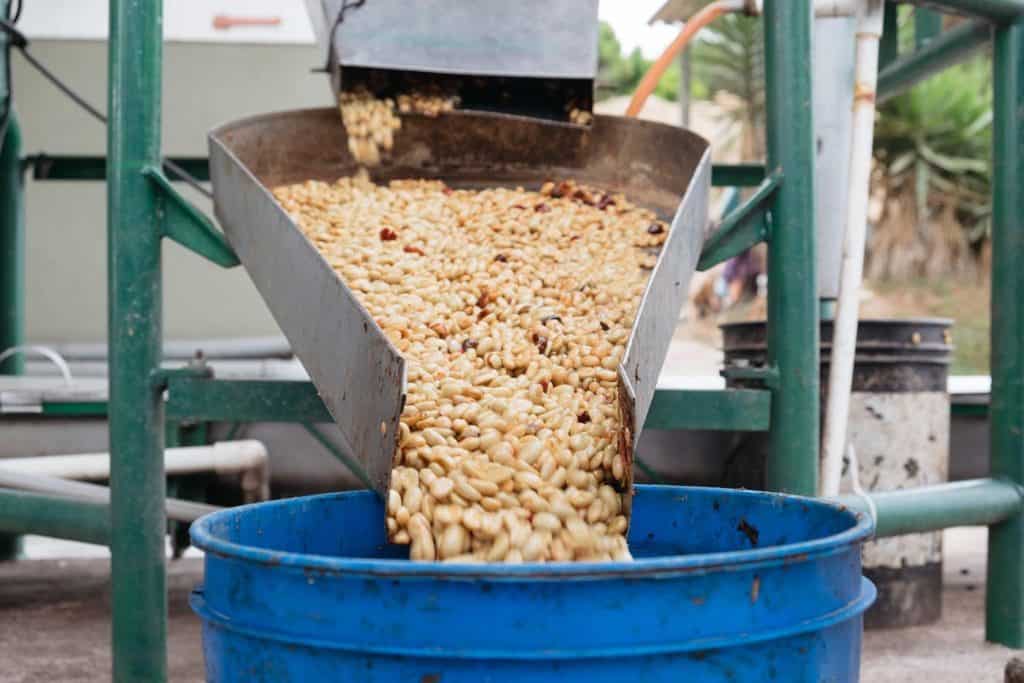
Along with the type of bean roasted, the way coffee is processed affects its taste. This process removes the cherry’s skin and fruit flesh. Generally, there are three coffee processing methods:
- Natural processing: In this dry process, coffee cherries picked from trees dry in thin layers under the sun. They are turned regularly to prevent rotting or mold. Once dried, the dried flesh and skin are removed from the green coffee. A common process in areas with limited water, such as Ethiopia, natural process coffees tend to have fruity and sweet flavors.
- Washed processing: This wet process is the other most popular way to process coffee. A de-pulper removes the fruit flesh through a mechanical process. Placement in a water tank for a short period of one to a few days removes any remaining flesh. The beans are washed again before drying, either under the sun or mechanically. The amount of water required for washed processing raises production costs.
- Honey processing: Common in places like El Salvador and Costa Rica, the de-pulping process leaves some flesh on the beans before they are dried. Sugars in the remaining flesh infuse flavor and a greater body into the beans. This process takes the best of both natural and washed processing practices.
Ethics and Sustainability
You can feel better about enjoying a cup of coffee if you know a bit about how the beans are cultivated and the long-term sustainability and environmental footprint of their production. You don’t want your tasty coffee to come at a high cost to the environment or to the people who produce it.
Fair Trade Coffee
Fair Trade certification through an organization such as Fair Trade USA™ pays farmers a premium above the basic commodity price so they can make money for the risk involved in their time and labor on the land.
Direct Trade Coffee
The difference between Fair Trade and Direct Trade coffee is a matter of which party certifies the business practices. Direct Trade is self-certified by the roaster, while Fair Trade occurs through an outside third party.
Organic Coffee
Organic coffee is produced without synthetic chemicals and fertilizers, offering cleaner beans and maintaining a better environment. Grown naturally, these beans have higher levels of healthy antioxidants.
Rainforest Alliance Certification
Rainforest Alliance certification goes to farms that focus on biodiversity, growing coffee under the shade of other trees.
Bird-Friendly Certification
Bird-Friendly certification is for coffee farms that protect habitats from excessive deforestation to preserve them for birds and other wildlife.


